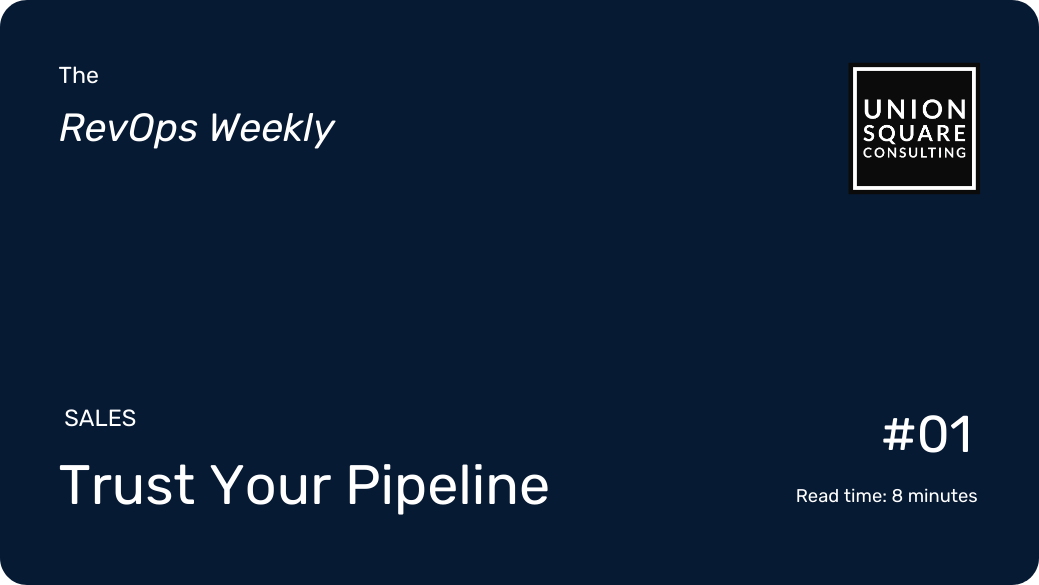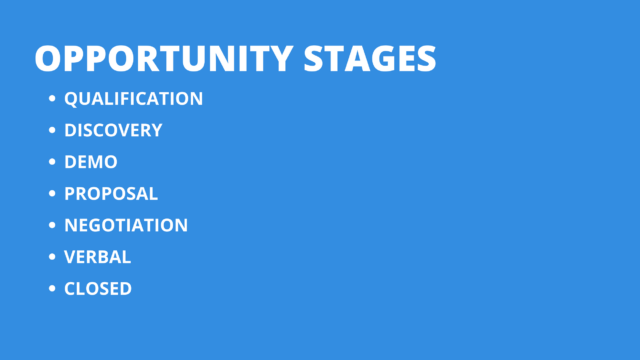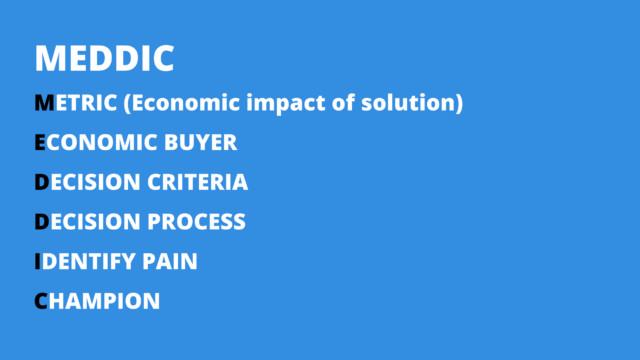
Trust Your Pipeline
Read time: 8 minutesAs you evolve from an initial sales team to a mature organization, three things become increasingly important:
- Predictability
- Repeatability
- Scalability
In the beginning, it’s tempting to just focus on making calls, booking meetings and closing deals. This helps to get initial traction but it’s extremely difficult to scale.
You’re moving fast. You can’t see what’s working, how to repeat it, what’s not working and what to do about it.
- No one’s using Salesforce
- New reps take too long to ramp
- Deals are lost you could have won
- It’s hard to see where reps need help
- It’s hard to see what top performers do
- Recruiting A-Players relies on gut instinct
- Sales meetings are wasted asking about deals
- Instead of focussing on where reps need help most
Everything that worked in the beginning is now an incredibly inefficient process that wastes valuable selling time and money. It leaves management with very little visibility into where sales will land at the end of the quarter, or what specifically can be done to improve performance.
At this point, management usually gets frustrated and realizes it’s time to make a change. It seems simple enough to bring in a junior Salesforce admin or consultant to clean up Salesforce and retrain the team.
Unfortunately, this rarely fixes the problem.
Without fixing the underlying strategy, process, metrics and ongoing enablement, most sales teams that try this find themselves in the same situation months and even years later. The team still isn’t using Salesforce properly, management still can’t get visibility into the pipeline or rep performance, and everything is done based on gut feel and anecdotal observations.
The Solution
The only way to fix this problem is to build the process into Salesforce, and your daily practices, until it becomes muscle memory for your entire sales team.
Fortunately there are a few simple steps to take to get there.
- Define the Strategy and Process
- Conduct a Regular Pipeline Review
- If Its Not in Salesforce It Didn’t Happen
- Improve the Process Regularly Over Time
This doesn’t happen over night. It requires careful planning, training, management, repetition, and consistency that results in gradual improvement over time.
Define the sales process
The first step is to clearly define your step by step sales process and the data points you will track in Salesforce to get visibility into your pipeline.
Define Opportunity Stages
Start by defining your Opportunity Stages and the Entry/Exit Criteria for each Stage.
Here’s a very common and generic example of Sales Stages in B2B SaaS:

Every team will have slightly different Opportunity Stages and that’s okay. What’s most important here is that each stage represents a material progression of the deal, and the team has a shared understanding of what it means to have a deal in each of those stages.
Entry and Exit Criteria
Your Opportunity Stages are defined by the criteria that is required for each deal to exit one stage and enter the next.
For example, your sales process may dictate that “The prospect must confirm the demo met all of their requirements.” before you can move a deal into the Proposal Stage and then spend valuable selling time on a proposal that may be a waste of time if the prospect isn’t really ready.
Opportunity Amount and Close Date
These two fields are required in Salesforce and, alongside your Opportunity Stage, make up the three core fields you need to understand your pipeline and produce your Sales Forecast. They’re fairly intuitive to understand, but the big question here is “How do you know you have the right Opportunity Amount and Close Date?”
Qualitative Data
This is where more qualitative data comes into play. Beyond these three data points, you want to look at your sales process and the questions you would commonly ask reps about their deals in meetings and pipeline reviews.
Instead of using all your time in team meetings and 1:1s to ask the same questions about each deal, you can ask those questions right in Salesforce and then review them before meetings. This allows management to identify which specific deals need help and leverage time in meetings much more effectively.
Example questions from MEDDIC, a popular sales methodology, include:
- Economic Impact
- What’s the economic impact of this decision for the prospect?
- Decision Criteria
- What criteria will the buying committee use to make a purchase decision?
- Decision Process
- What steps will the buying committee need to take to reach a decision?
By asking these questions and capturing the answers in your CRM, you not only save valuable meeting time and make meetings far more effective, but you also help reps ramp much faster and commit your sales process to muscle memory.

Conduct Regular Pipeline Review
Once you’ve defined your Sales Process, updated Salesforce, and trained your team, they won’t automatically start tracking their pipeline perfectly. This requires ongoing review and coaching.
Start by providing the team with the right reporting so they can see exactly what management is reviewing and set a specific time you expect the pipeline to be updated, ideally at least each week.
One thing to be VERY careful of is setting appropriate expectations. All too often, overzealous RevOps professionals and sales leaders will expect sales reps to update 35 fields every time they get off the phone. For big strategic deals in late stages, it’s reasonable to expect reps to invest time to review their deals thoroughly and update a fair bit of information. However, for high velocity transactional deals, especially in early stages, it might be hard to ask for much without sacrificing rep productivity.
At first this will feel like a tedious and annoying reminder to reps to update their pipelines but the consistency will create a habit and enable pipeline reviews to transform into real sales coaching over time.
Once reps are regularly updating the pipeline, management can use the data to spot specific areas where they need more coaching, from knowing when to walk away from deals, to techniques to improve close rates, to better visibility into the strength of their pipeline and likelihood of hitting quota.
If it’s Not Happening in Salesforce it Didn’t Happen
Most sales teams that have succeeded with this adopt the mantra “If it’s not in Salesforce it didn’t happen.” Simply put, there’s no excuse for a salesperson to not have their pipeline updated prior to team meetings, 1:1s and deal reviews where their pipeline will be discussed.
Salesforce own sales team adopts the mentality of “Real Time All The Time” meaning that there is no scrambling to update your deals prior to these meetings. The expectation is that deals will be updated after every call, meeting or email with any material updates.
Improve Over Time
In a separate article I’ll cover forecasting but suffice it to say it goes hand in hand with pipeline reviews. Once your team is doing a thorough pipeline review and forecast every week, the next step to improve is simply to reflect on your accuracy each week and what worked well and what did not.
Questions you might ask include:
- How accurate were Amounts?
- How accurate were Close Dates?
- How many deals pushed and why?
- Did deals go back in Stages and why?
- Did deals get stuck in Stages and why?
- What deals were lost and what happened?
- Why did they slip and did we identify risks?
This will enable your team to improve their Pipeline Management over time, eventually starting each quarter with a fairly good idea for where things will end up. Additionally this helps reps gain a much clearer understanding of the pipeline that must be built to start the following quarter strong and have a solid chance of hitting quota.
SUMMARY
In summary, this takes well thought out design and repetition.
- Your team needs a shared understanding of the sales process.
- You need regular review of the pipeline and coaching to improve.
- Driving adoption of the process and technology requires repetition.
- As you gain adoption, you’ll improve pipeline management over time.
That’s all for our guide on pipeline.
Thanks for reading.
When you’re ready, here’s how we can help:
Get a Free 1:1 Revenue Efficiency Workshop
Get one of our Senior Revenue Strategists to yourself for 1 hour and leave with a plan to increase the money-making power of your go-to-market operations.
Hire Us!
Bring us on as your Strategic RevOps Team and realize the growth potential of your revenue engine. There are 3 ways to work with us.
Get more tips like these, sent right to your inbox.
Subscribe for fresh, relevant revenue growth tips delivered every week.